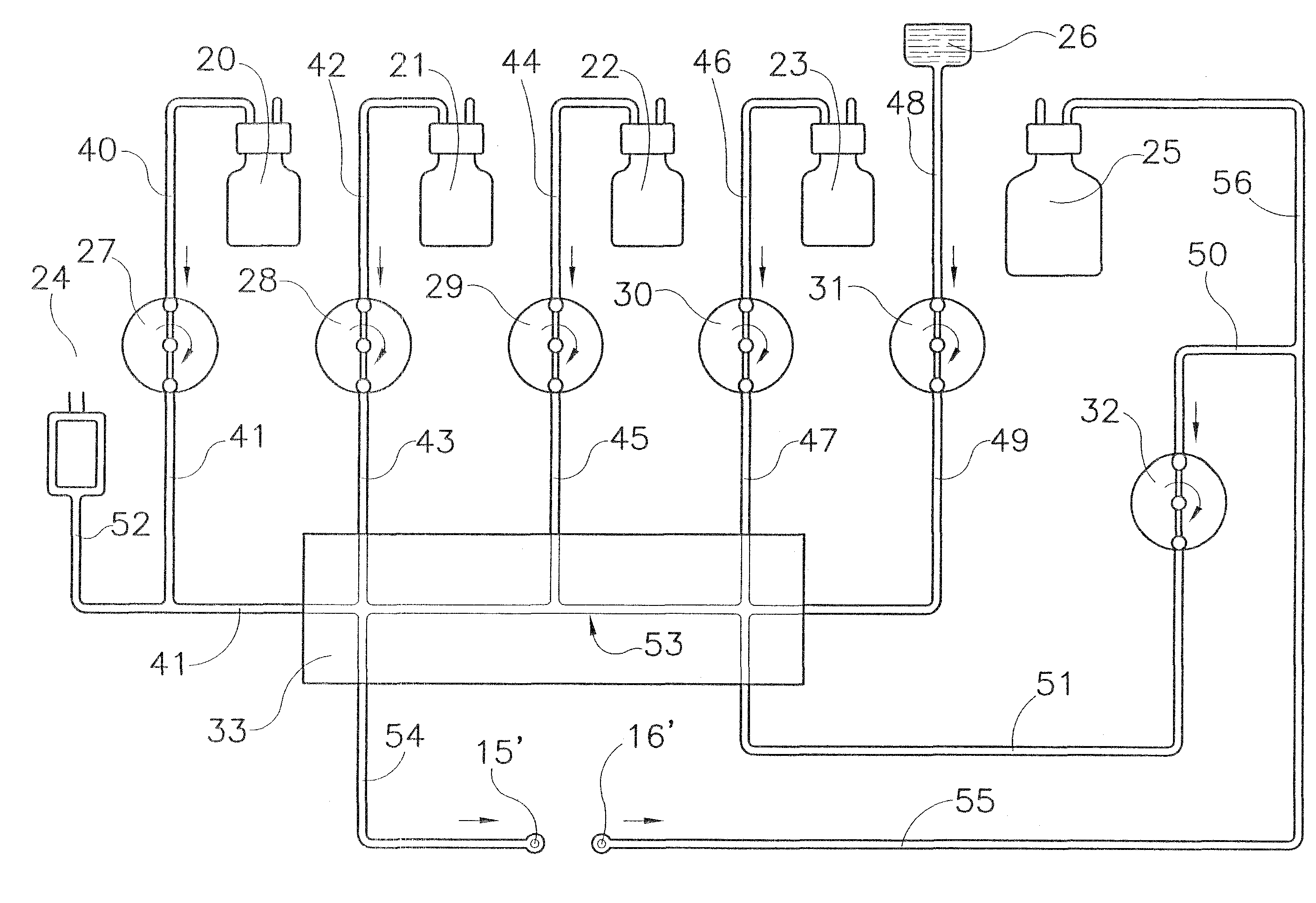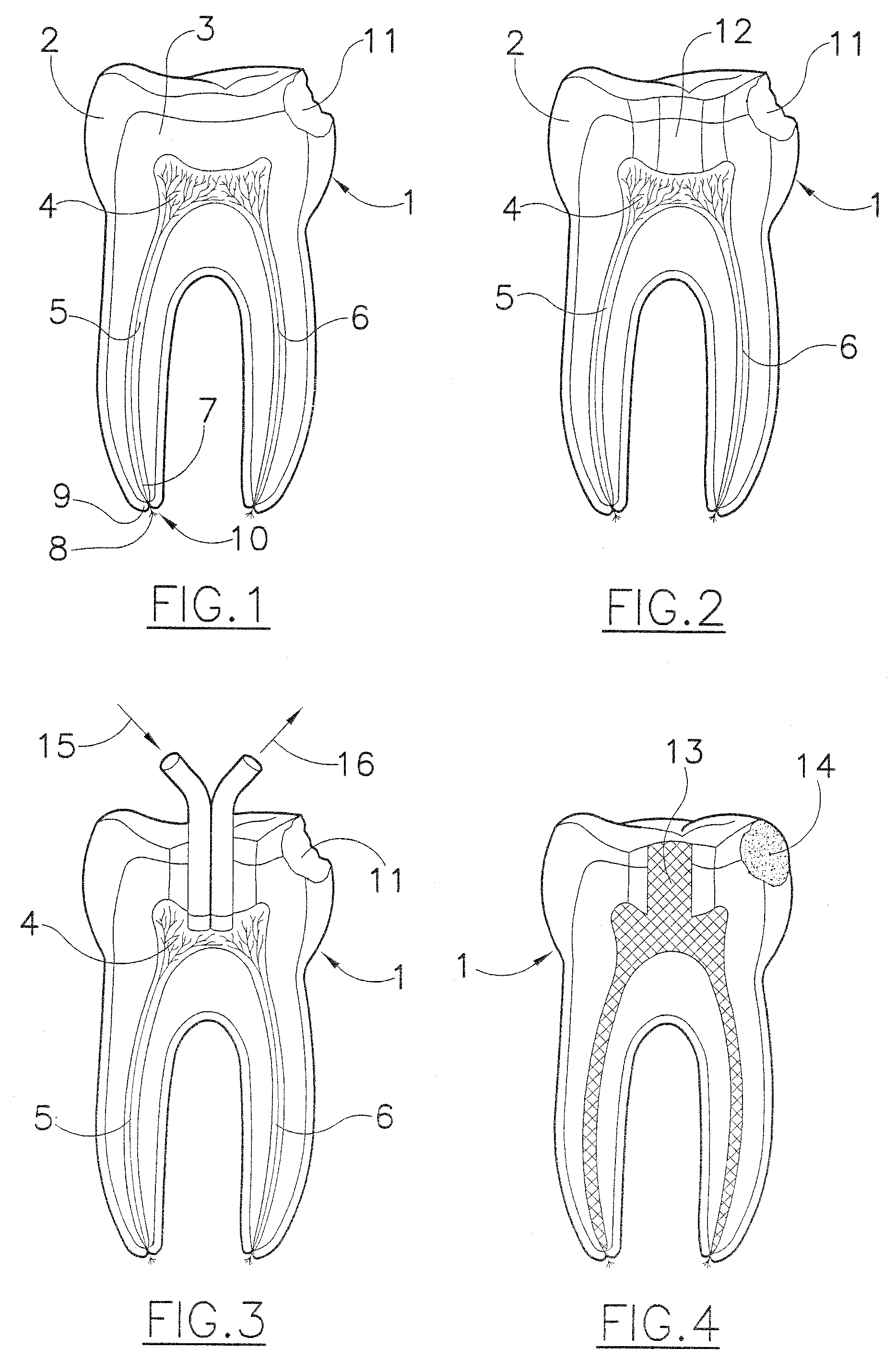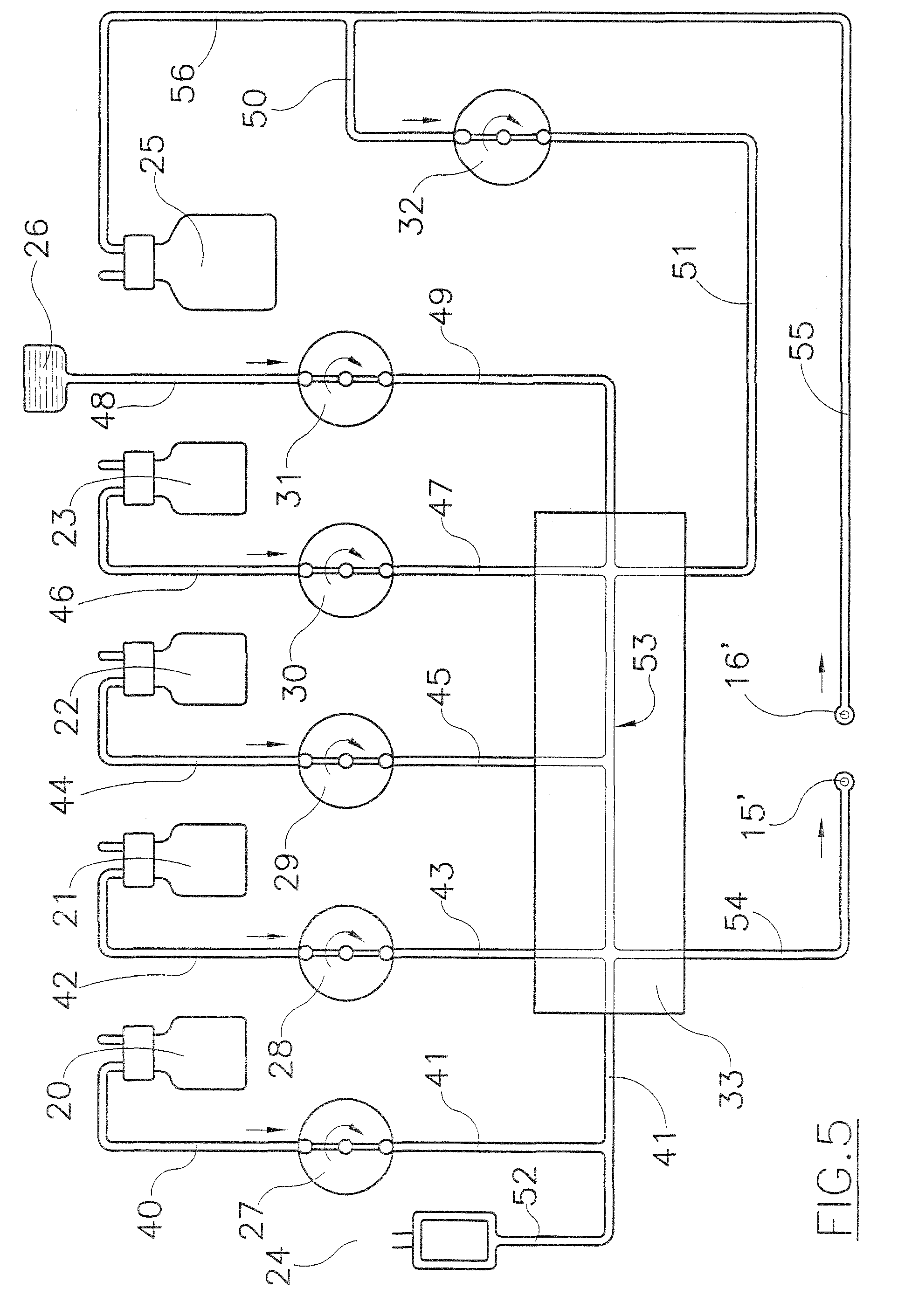Apparatus for endodontic treatment by circulation of enzymatic solutions in the pulp cavity and in the root canals
a technology of endodontic treatment and apparatus, which is applied in the field of apparatus for endodontic treatment, can solve the problems of insufficient international literature on the subject, difficulty, and inability to meet the needs of patients, and achieve the effect of reducing any damage to surrounding tissues
- Summary
- Abstract
- Description
- Claims
- Application Information
AI Technical Summary
Benefits of technology
Problems solved by technology
Method used
Image
Examples
Embodiment Construction
With reference to FIG. 3, it will be seen that a small head consisting of two stainless steel tubes 15, 16 has been fitted into the hole 12 (FIG. 2), the first of these tubes being used to let fluid (liquid or air) into the pulp cavity 4 and into the root canals 5, 6 while the second tube is used for fluid outflow. The hydraulic diagram in FIG. 5 represents an apparatus for endodontic treatment, said apparatus being connected to two tubes 15 and 16 (FIG. 3) by two flexible tubes (not shown) joined to two connections 15′ and 16′. The electrical part is not shown either for the sake of simplicity, but this can in any case be added by an expert in electronics in accordance with the following explanations and using parts available on the market. With reference to FIG. 5, the hydraulic circuit comprises: 5 bottles for liquids 20, 21, 22, 23, and 25 each having a stopper in which a first hole is made for a short length of tube in communication with the environment, and a second hole made ...
PUM
 Login to View More
Login to View More Abstract
Description
Claims
Application Information
 Login to View More
Login to View More - R&D
- Intellectual Property
- Life Sciences
- Materials
- Tech Scout
- Unparalleled Data Quality
- Higher Quality Content
- 60% Fewer Hallucinations
Browse by: Latest US Patents, China's latest patents, Technical Efficacy Thesaurus, Application Domain, Technology Topic, Popular Technical Reports.
© 2025 PatSnap. All rights reserved.Legal|Privacy policy|Modern Slavery Act Transparency Statement|Sitemap|About US| Contact US: help@patsnap.com



